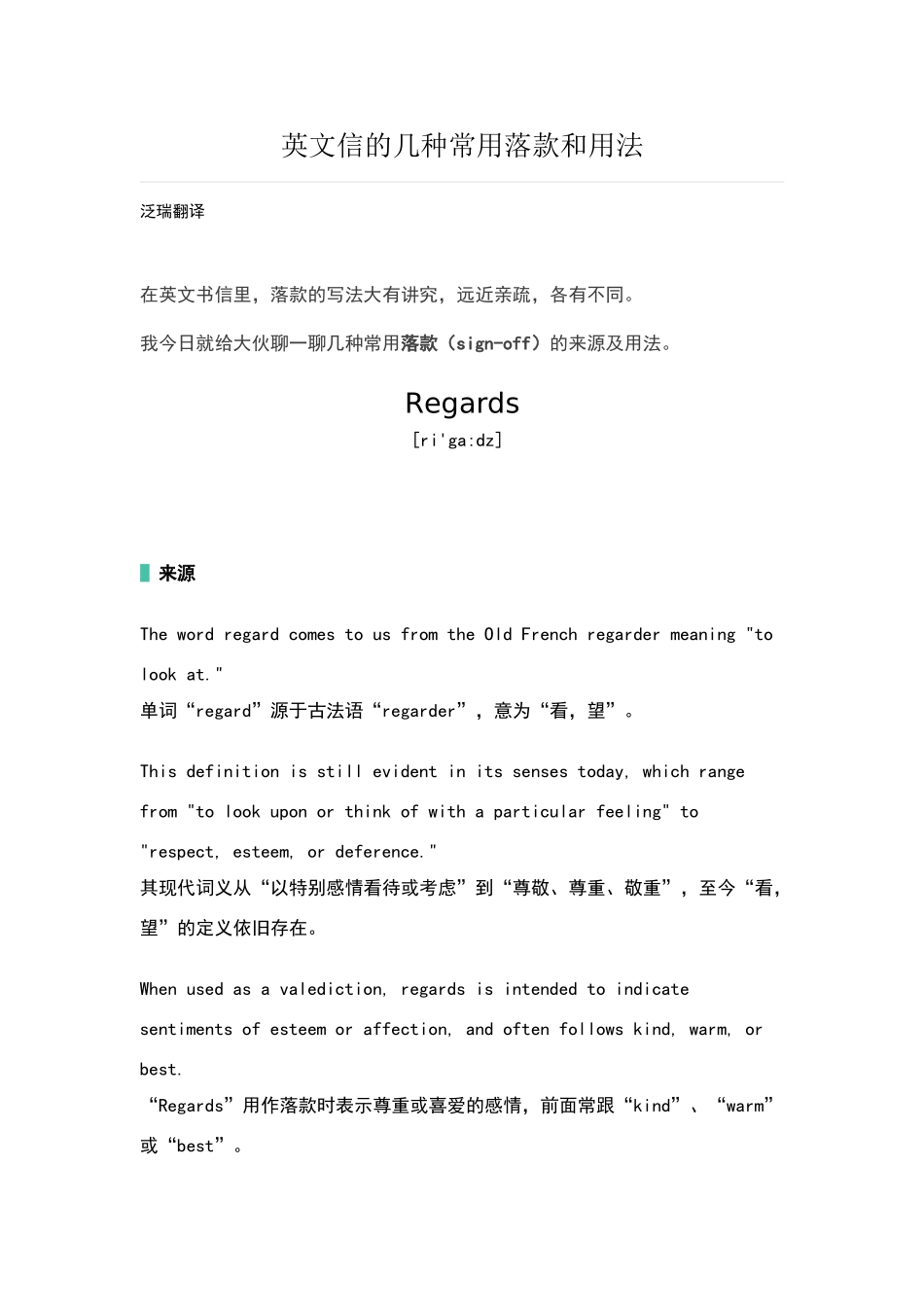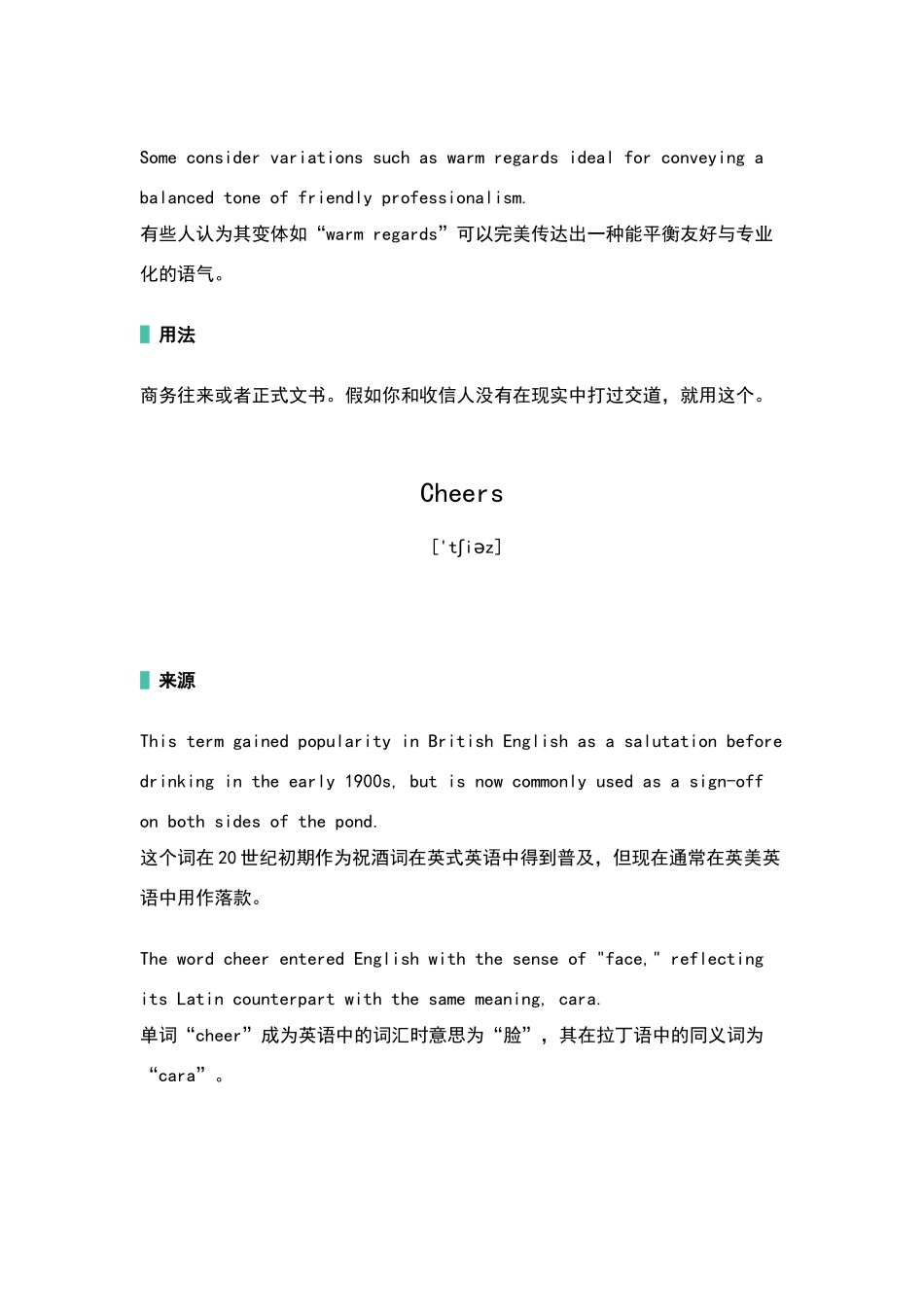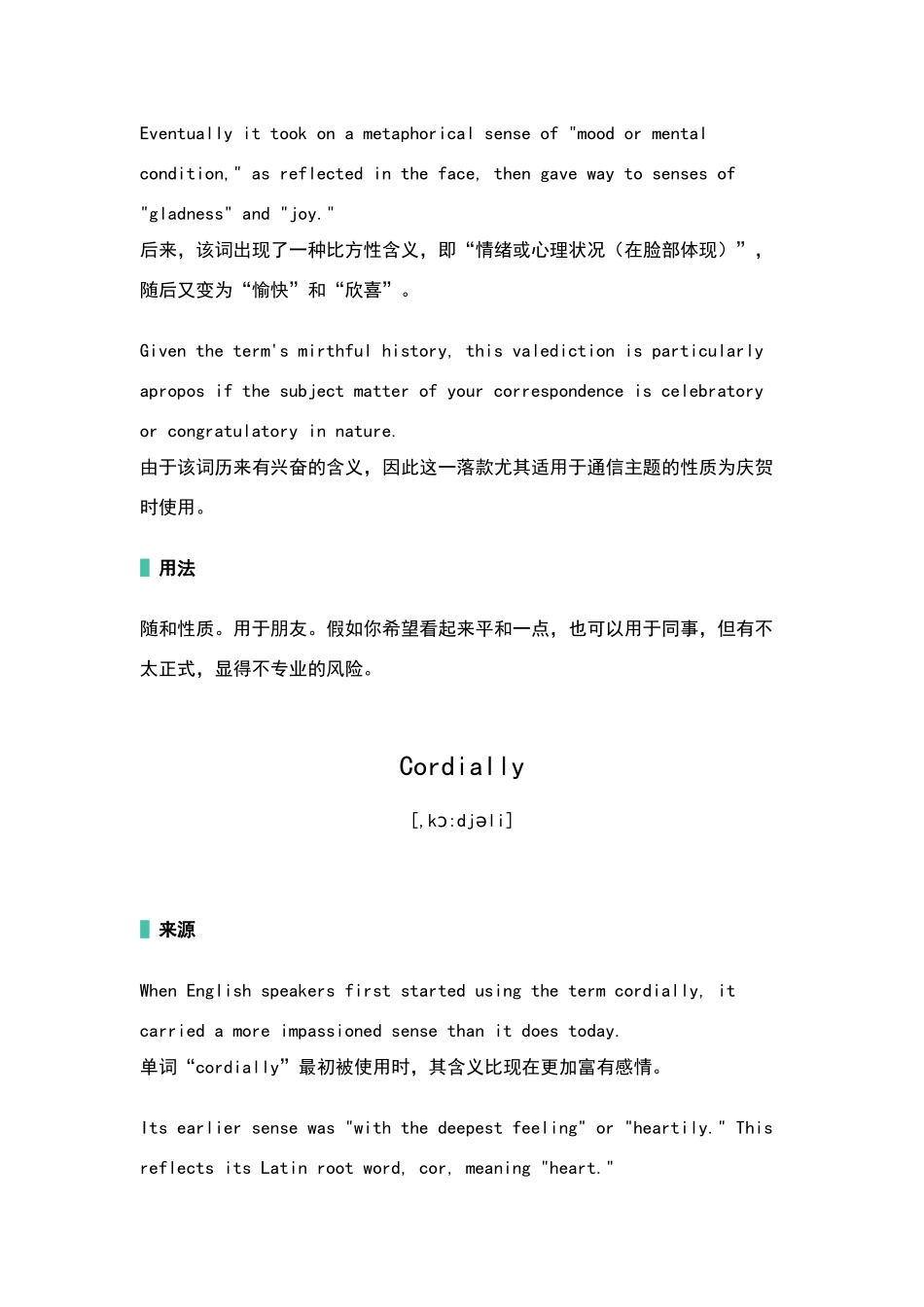英文信的几种常用落款和用法泛瑞翻译在英文书信里,落款的写法大有讲究,远近亲疏,各有不同。我今日就给大伙聊一聊几种常用落款(sign-off)的来源及用法。Regards[ri'ga:dz] ▌来源The word regard comes to us from the Old French regarder meaning "to look at."单词“regard”源于古法语“regarder”,意为“看,望”。This definition is still evident in its senses today, which range from "to look upon or think of with a particular feeling" to "respect, esteem, or deference." 其现代词义从“以特别感情看待或考虑”到“尊敬、尊重、敬重”,至今“看,望”的定义依旧存在。When used as a valediction, regards is intended to indicate sentiments of esteem or affection, and often follows kind, warm, or best.“Regards”用作落款时表示尊重或喜爱的感情,前面常跟“kind”、“warm”或“best”。Some consider variations such as warm regards ideal for conveying a balanced tone of friendly professionalism.有些人认为其变体如“warm regards”可以完美传达出一种能平衡友好与专业化的语气。▌用法商务往来或者正式文书。假如你和收信人没有在现实中打过交道,就用这个。Cheers ['tʃiəz]▌来源This term gained popularity in British English as a salutation before drinking in the early 1900s, but is now commonly used as a sign-off on both sides of the pond.这个词在 20 世纪初期作为祝酒词在英式英语中得到普及,但现在通常在英美英语中用作落款。The word cheer entered English with the sense of "face," reflecting its Latin counterpart with the same meaning, cara.单词“cheer”成为英语中的词汇时意思为“脸”,其在拉丁语中的同义词为“cara”。Eventually it took on a metaphorical sense of "mood or mental condition," as reflected in the face, then gave way to senses of "gladness" and "joy."后来,该词出现了一种比方性含义,即“情绪或心理状况(在脸部体现)”,随后又变为“愉快”和“欣喜”。Given the term's mirthful history, this valediction is particularly apropos if the subject...


